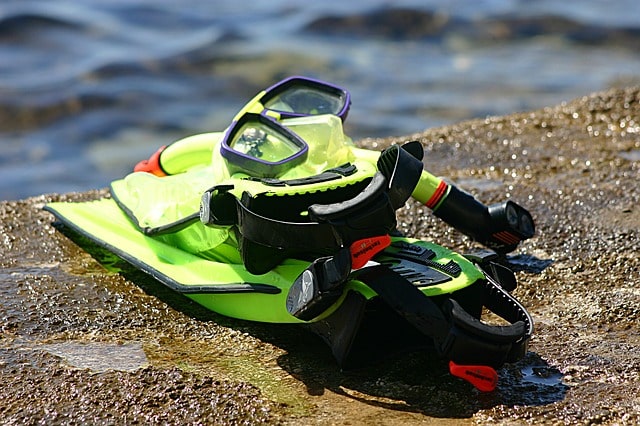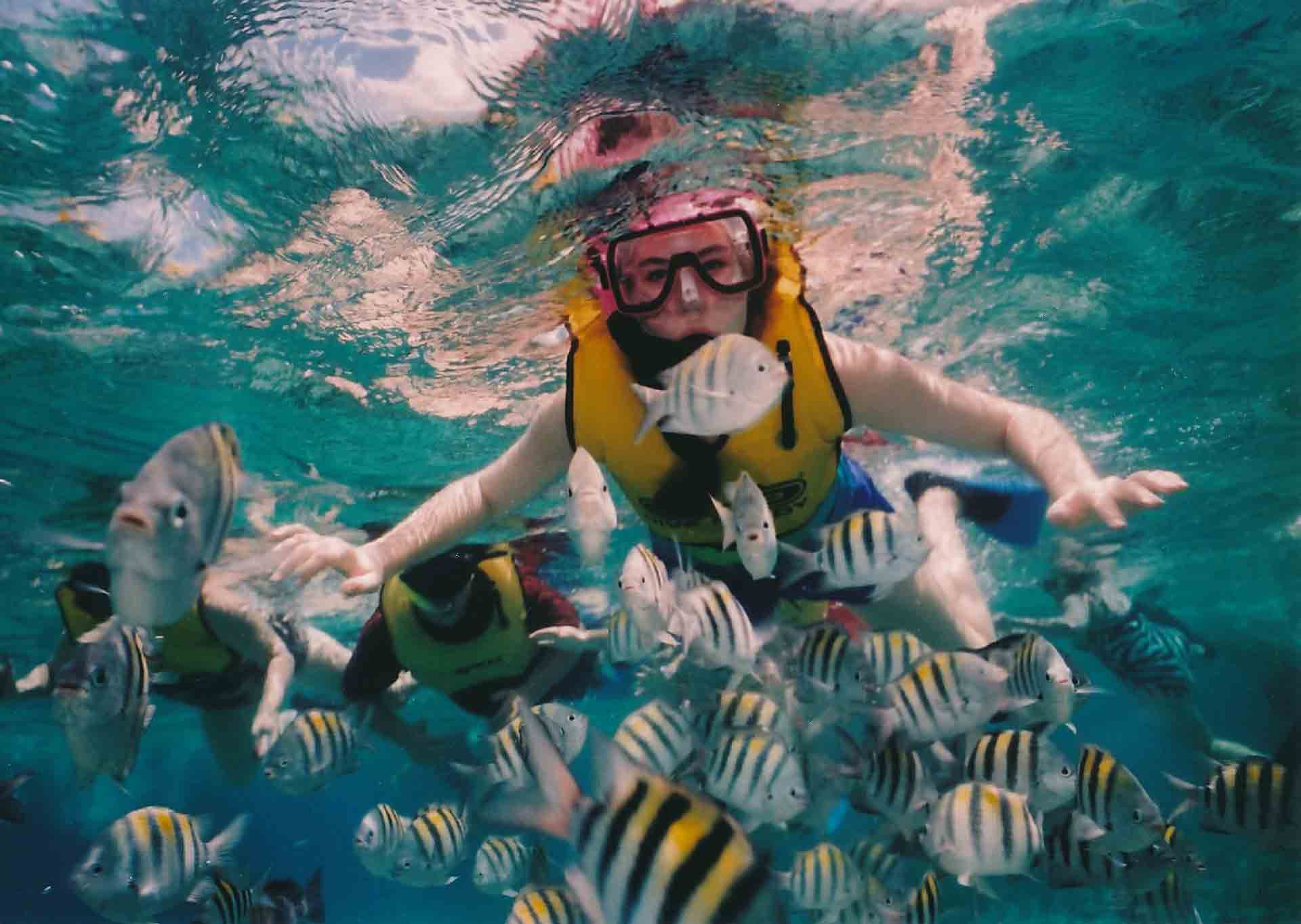For those who don’t want to commit to a diving trip, or just aren’t comfortable being in the open ocean, snorkeling can be a great alternative underwater activity. Snorkeling is also an easier way to explore and observe the sea.
However, before you jump in the water, check out these tips on how to help you properly prepare for a snorkeling adventure!
Choosing the right mask
The best mask is one that fits the contours of your face. Keep in mind there are two variants of snorkel mask; traditional and full-face. The first consists of only two parts: the mask itself plus the snorkel. This one covers only your eyes and nose.
The full-face snorkel mask covers both your nose and mouth, allowing you to breathe from either one. This is recommended for beginners and those who cannot swim. Additionally, this mask provides a better view from the mask.
Fins and vest
Wearing a pair of fins on your feet will add more pushing power when you snorkel, ensuring you use less energy. In addition to more power, the fins also serve as protection in case you scrape your feet on debris or coral underwater. We recommend you choose fins that are slightly too big, as they can shrink in colder water.
For beginners and non-swimmers, it’s recommended to wear vests to help you float on the surface. These are usually brightly colored as well, making you easy to spot in an emergency.
Be aware of location
For those snorkeling for the first time, the sensation of being able to explore and observe the underwater environment can be very exciting. However, it’s important to keep an eye on your surroundings. Be aware of the safe areas and don’t lose track of things underwater and wander into areas you aren’t familiar with. Either stay close to the shore or the boat, and check your location every few minutes.
Underwater etiquette
This is an important rule that is often neglected. Always keep a safe distance from all marine life, and don’t ever touch. You are essentially a foreign element in their ecosystem, and touching any marine life can potentially provoke them into becoming hostile. Some corals can also be toxic if you make physical contact.
Snorkeling can be a great experience on a liveaboard trip! Liveaboard trips doesn’t necessarily restrict you to diving activities only, there are plenty of other non-diving activities as well, such as kayaking, bird watching and trekking to the surrounding islands of your liveaboard destination.
We hope this article has given you insights on what to look out for, and how to prepare before your next snorkeling or liveaboard trip! What do you think of the snorkeling trips we’ve listed here?
Looking for a liveaboard trip around Raja Ampat, Cendrawasih Bay, Triton Bay and Banda Sea? We suggest booking your trip during the months of April, May and June for the best conditions. Feel free to contact us with any inquiries or questions!



